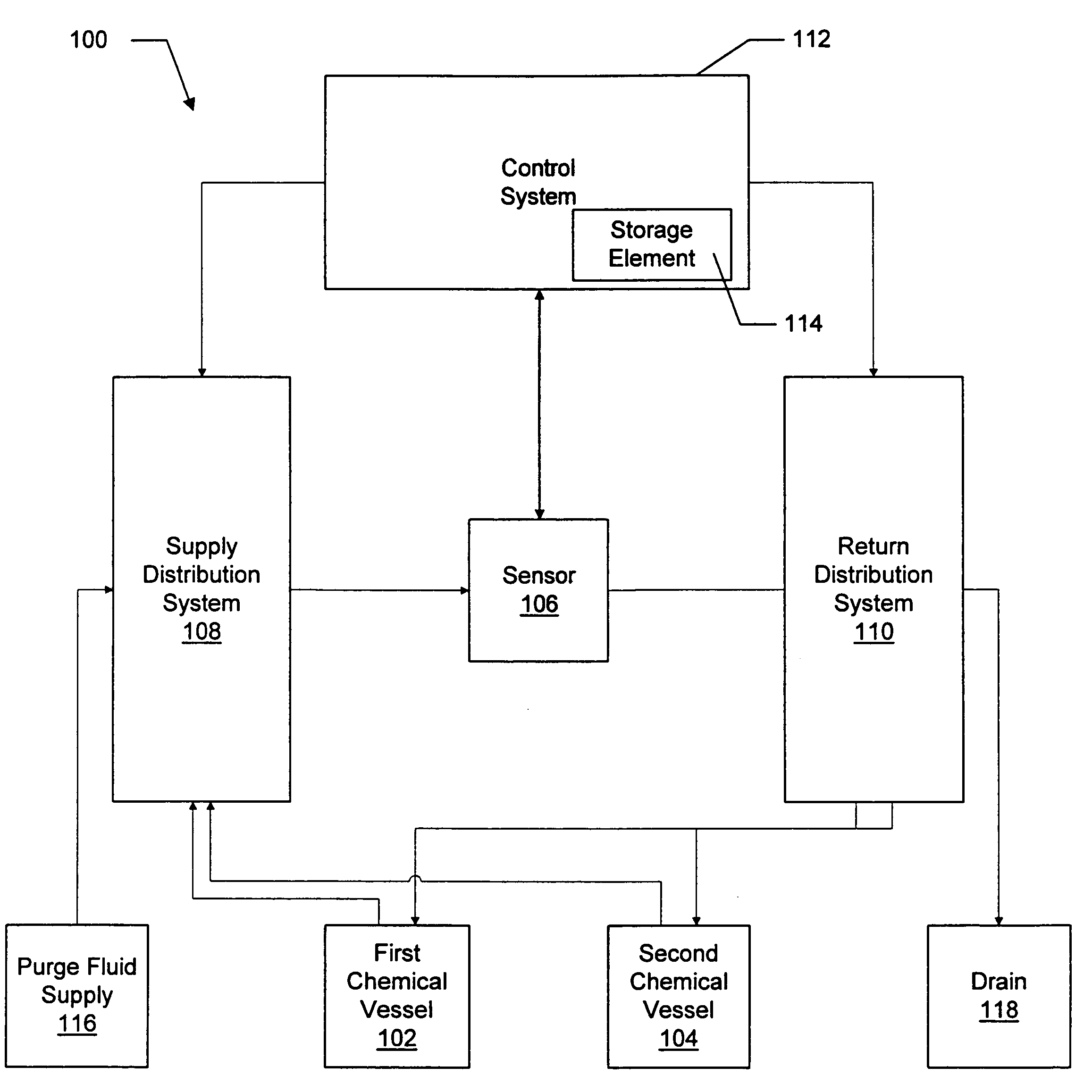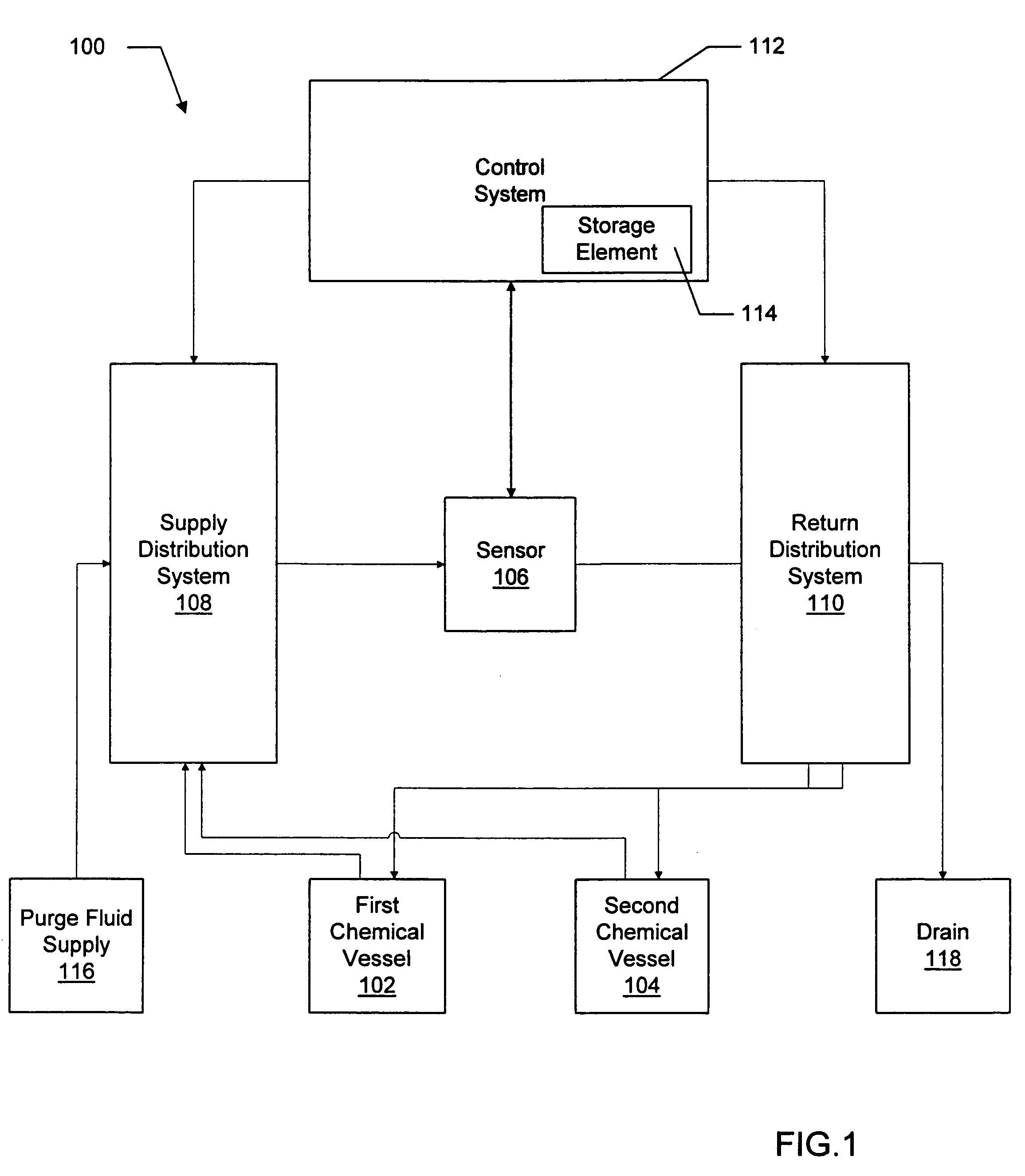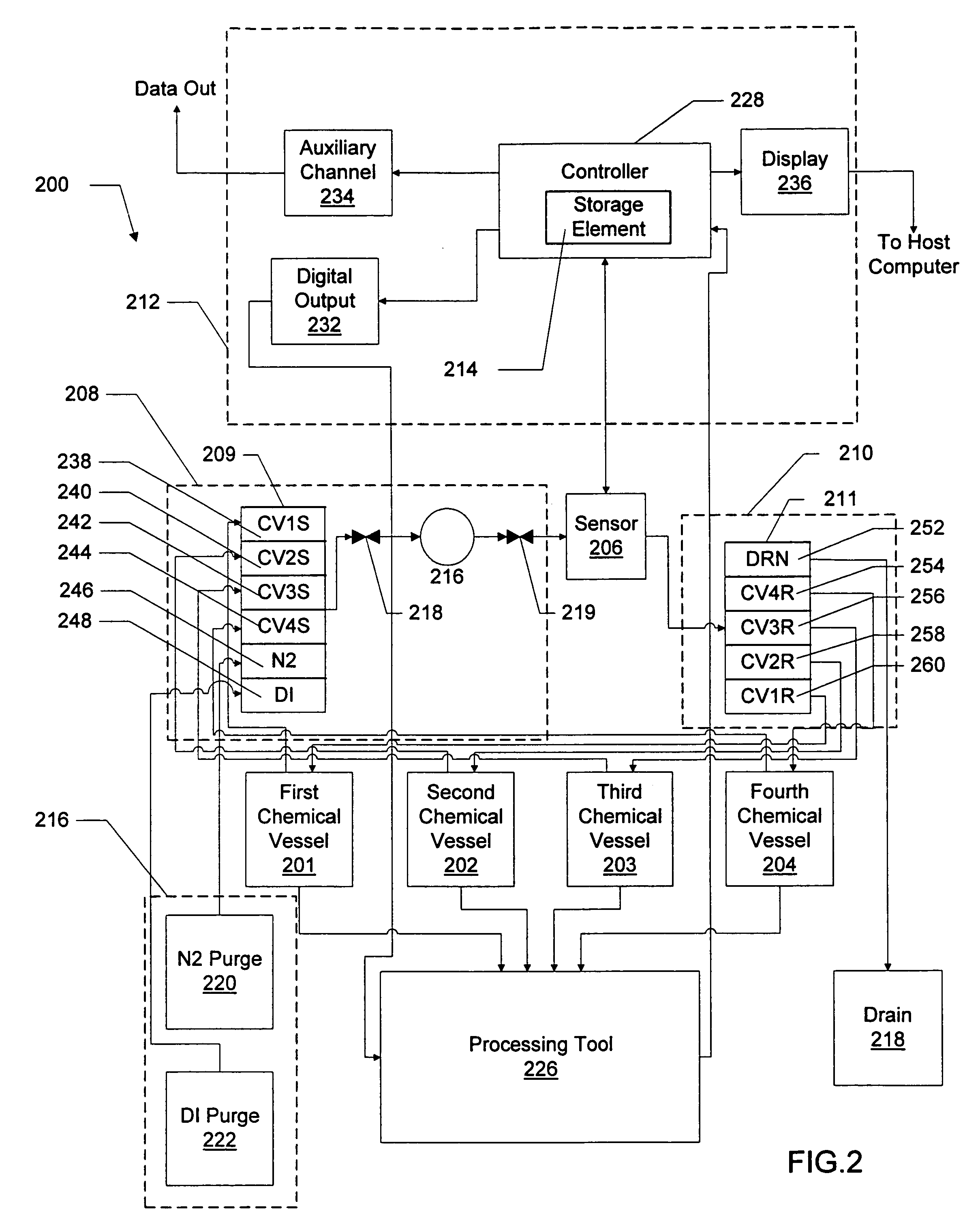System and method for monitoring and/or controlling attributes of multiple chemical mixtures with a single sensor
a technology of attributes and sensors, applied in chemical methods analysis, laboratory glassware, instruments, etc., can solve the problems of chemical process not meeting its goals, residues often remain on wafer surfaces, and chemical attacks on silicon surfaces
- Summary
- Abstract
- Description
- Claims
- Application Information
AI Technical Summary
Benefits of technology
Problems solved by technology
Method used
Image
Examples
Embodiment Construction
[0058]Referring now to the Drawings, FIG. 1 presents monitoring system 100. Monitoring system 100 is preferably configured to monitor one or more attributes of multiple chemical mixtures contained in multiple chemical vessels. In the embodiment shown in FIG. 1, monitoring system 100 includes a first chemical vessel 102 and a second chemical vessel 104. First chemical vessel 102 preferably contains a first chemical mixture. Likewise, second chemical vessel 104 preferably contains a second chemical mixture. In addition, monitoring system 100 preferably includes sensor 106. Sensor 106 is preferably configured to selectively receive a first sample flow of the first chemical mixture from the first chemical vessel and to selectively receive a second sample flow of the second chemical mixture from the second chemical vessel. Stated otherwise, sensor 108 is preferably configured within monitoring system 100 such that, during operation, sensor 106 may selectively receive sample flows from th...
PUM
| Property | Measurement | Unit |
|---|---|---|
| time | aaaaa | aaaaa |
| time | aaaaa | aaaaa |
| pre-control response time | aaaaa | aaaaa |
Abstract
Description
Claims
Application Information
 Login to View More
Login to View More - R&D
- Intellectual Property
- Life Sciences
- Materials
- Tech Scout
- Unparalleled Data Quality
- Higher Quality Content
- 60% Fewer Hallucinations
Browse by: Latest US Patents, China's latest patents, Technical Efficacy Thesaurus, Application Domain, Technology Topic, Popular Technical Reports.
© 2025 PatSnap. All rights reserved.Legal|Privacy policy|Modern Slavery Act Transparency Statement|Sitemap|About US| Contact US: help@patsnap.com



